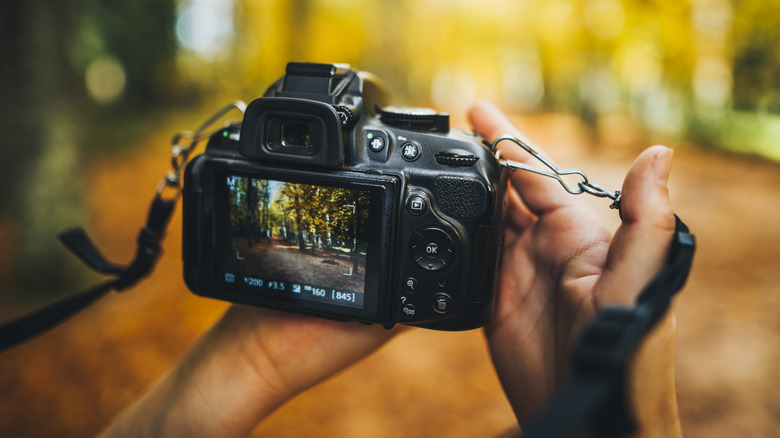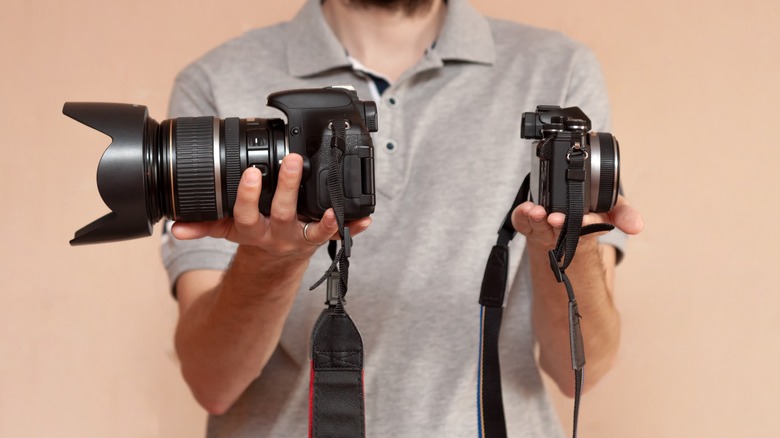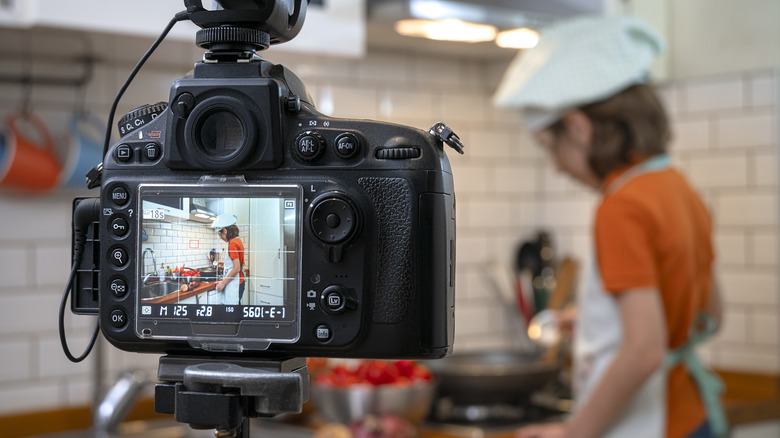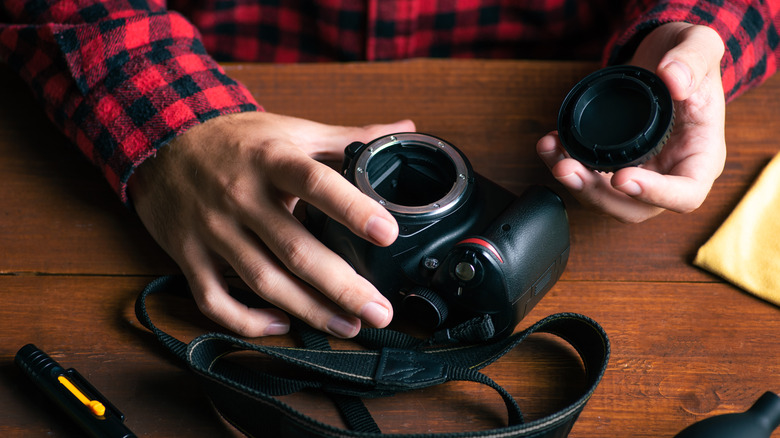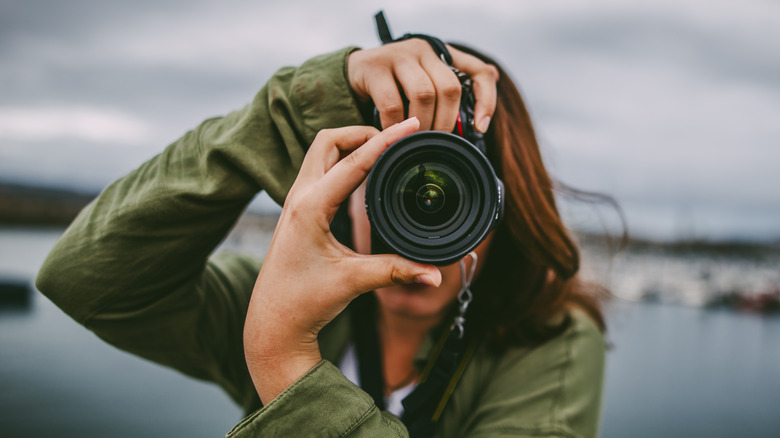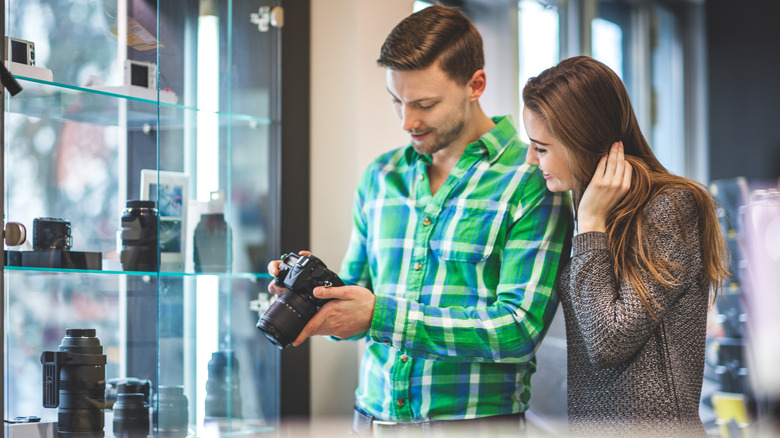Everything You Need To Know Before Buying A New Camera In 2024
Whether you've picked up photography as a hobby and are looking to purchase a camera, or you already own a camera but want to upgrade it, there's a lot you need to consider before making the purchase. Unlike in the past, cameras these days are a lot more than simple point-and-shoot devices. In fact, modern cameras are equipped with features and capabilities that every level of photographer, from the casual hobbyist to a professional, will find helpful.
From connectivity tools like Bluetooth and Wi-Fi to stabilization features and video capabilities, newer cameras are designed to improve your user experience and enhance your creative output. However, all these advancements come at a cost, and you'll find that cameras these days cost almost as much as a high-end smartphone or even a brand-new laptop. Given this, you want to ensure you're making a well-thought-out decision before splurging on a camera.
To help you make an informed choice and select what type of camera to opt for (and whether you even really need a camera considering that modern smartphone cameras can be extremely powerful), we've put together a list of things you should take into account and know before you purchase a camera.
Understanding camera types
There are various types of cameras available, each having specific pros and cons. For example, DSLR (digital single-lens reflex) cameras use a single lens for photography and typically include plenty of manual controls. They have larger sensors, which capture sharper images. The downside is that they're can be pretty heavy and bulky, which means carrying them around takes some preparation.
There are also mirrorless cameras available, and they're typically lighter than a DSLR but still capture great images with excellent detail. These cameras have a range of capabilities like in-built autofocus systems, touchscreen live views, and in-body image stabilization, to name a few. However, they have limited battery capacity and can be quite expensive.
You also have action cameras, which are waterproof and built for rugged use. A popular action camera brand that you've likely come across is GoPro. These cameras, as the name suggests, are primarily used to capture video footage during outdoor activities. While these cameras are a great buy if you're into extreme sports and adventure activities, you'll need to temper your expectations when it comes to battery life and audio quality.
Point-and-shoot cameras are still around as well. These cameras have fixed lenses and small dimensions and are fairly user-friendly; these factors make them well-suited for beginners. However, they lack the advanced features that the other camera types come with, so they may not be worth the purchase, especially if your smartphone can capture decent photos.
The quality of smartphone cameras
You're likely looking to upgrade from your smartphone camera for improved image quality; while that is an important factor, it's essential to recognize that the megapixel count alone will not produce high-quality images. In fact, considerations like high-quality lenses, better dynamic range, and the camera's image processing capabilities are equally, if not more, significant when it comes to capturing stunning, high-quality images.
It's helpful to note that smartphone cameras have come a long way in terms of producing high-quality images. For instance, the Pixel 8 and the Pixel 8 Pro have received significant upgrades to their camera hardware. Both phones use computational photography and have top-notch cameras, which make them capable of capturing images that can compete with those taken by standalone cameras you buy separately.
Similarly, many of the newer Galaxy phones support RAW capture, which until recently was a feature found in only professional-grade cameras. RAW images capture a lot more data from the camera sensor, providing the photographer and image editor with a better-quality image to work with during editing.
Given this, don't dismiss your smartphone's camera-related capabilities and assume that a professional camera is what you need to capture superior images. If you're an amateur photographer, this might be a good time to practice taking better-quality images with your smartphone. If you still feel like you may benefit from a better standalone camera, you can certainly invest in one.
Consider the sensor size
Have you ever wondered why a photo captured using a 50-megapixel smartphone camera is not as sharp as one captured with a 32-megapixel DSLR or mirrorless camera? A key factor that affects the sharpness and detail of the image is the sensor size. Camera sensors contain photosites, which turn light into pixels. A larger sensor allows for larger individual photosites, which, in essence, capture more detail. In comparison, a smartphone has a relatively small sensor, which limits the detail that can be captured in a photograph.
Larger sensors also offer better performance in low-light conditions, which is why you may find that DSLRs and other professional-grade cameras are able to capture clearer images even in less-than-ideal lighting situations. This is why it helps to check the size of the sensor before you purchase a camera. While there are different types of sensors, you're likely to find some that are 1 inch or smaller in compact and more budget-friendly cameras. Mid-range DSLR and mirrorless cameras usually have what are known as APS-C sensors, which capture sufficient detail.
Full-frame sensors are the largest type, and they're usually only available in advanced, professional-grade cameras. While these sensors capture pretty much everything in terms of detail, keep in mind that cameras with this type of sensor can be quite heavy.
So, when purchasing a camera, look for one that has a sensor size that suits your photography needs but is comfortable for you to carry, especially if you're looking to shoot for long durations.
Choosing the right lenses
Cameras will either have interchangeable or fixed lenses, and the latter can include zoom lenses or prime lenses. Zoom lenses give you the option of adjusting the focal length without swapping the lens. This makes them suitable for a variety of photography styles (like, say, if you were photographing wildlife, where the distance of the subject may change frequently).
In comparison, prime lenses have a fixed focal length, which means you cannot zoom in and out. Instead, you'll need to physically move closer or farther away from a subject to achieve a desired effect. One of the key benefits of prime lenses is that they reduce distortion and capture sharp images.
Interchangeable lenses, on the other hand, are available separately and can be attached to the camera or swapped out for different lenses when needed. The benefit of having a camera that is compatible with interchangeable lenses is that you get to select the whatever lens fits the situation. That means you'll be able to use a telephoto lens to capture distant subjects, a wide-angle lens for landscapes, and a macro lens if you need to shoot close-up details.
If you're wondering which type of lens — fixed or interchangeable — is right for you, you'll need to take your specific needs into account. If you want to capture high-quality photos in different settings, a camera with interchangeable lenses might be a good choice. However, if you prioritize simplicity and ease of use, fixed-lens cameras are a good bet.
Budget considerations when purchasing a new camera
The cost of cameras can vary pretty widely, from $150 and under for a simple point-and-shoot camera to well over $2,000 for a professional camera. But before you spend a significant amount of money on a new camera, it's important that you assess what features are most important to you. Mainstream brands offer cameras that come loaded with a whole range of capabilities. While many of these features are valuable and can affect your overall experience with the camera, you're likely to use only a handful of them regularly.
If you're a beginner photographer, consider purchasing a basic or mid-range DSLR camera that will let you take high-quality photos at a more affordable price point. On the other hand, if you're a professional photographer who requires access to large sensors, a higher megapixel count, the ability to change lenses, and robust stabilization and autofocus features, you're better off investing in a camera that will support these needs, even though it may come at a higher price point.
Also, while the upfront cost of the camera matters the most, be sure to account for additional expenses that you may incur when purchasing things like lenses, memory cards, and camera bags. Ideally, in terms of accessories, it's best to start with the basics and purchase as you gain more experience or identify a particular need.
